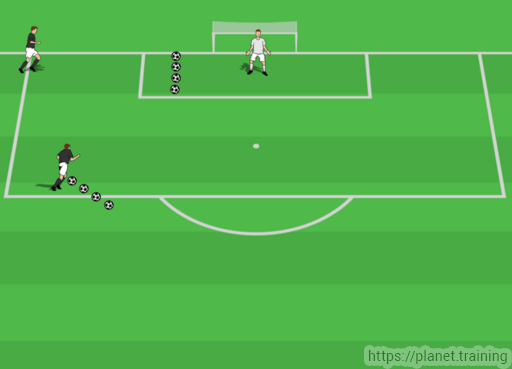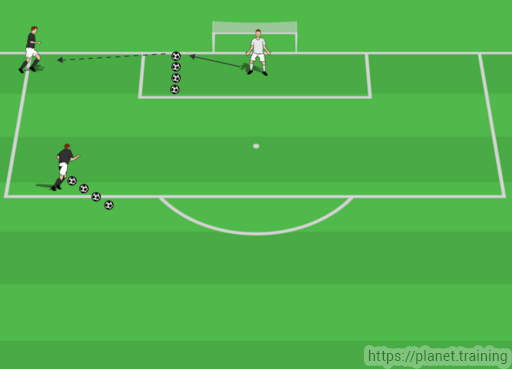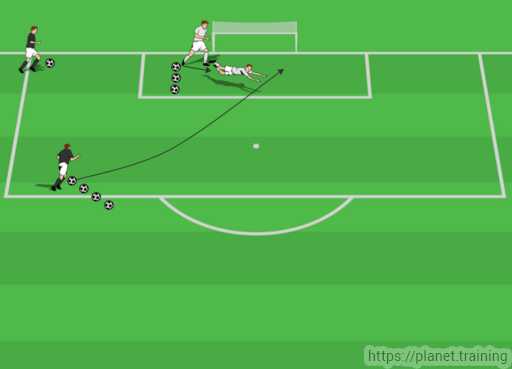By Scott Housden -
The exercise below is a great drill to finish a shot stopping session on. It adds an element of competitiveness among the goalkeepers as they can take turns in shooting. It is also a good marker as to how much the goalkeepers have absorbed during the session as a key component to this drill is to attack the ball when diving with both upper and lower body drives essential.
Set Up
The set up as shown in the diagram below requires a goal and 8 balls with 2servers.
4 balls are requires set up inside the 6 yard box with one server just outside the side of the penalty box ready to receive a pass from the goalkeeper.
The other 4 balls are set up at the top of the penalty box with the second server lined up to shoot.
The goalkeeper starts in the middle of his goal.
Fewer balls can be used for junior or goalkeepers with lesser ability

The goalkeeper starts by moving to the first ball and accurately passing to the server. They then have to move quickly back into the goal where the second server will then shoot (the second server does this when the goalkeeper is back in line with the near post), aiming each time for the far post.

This is repeated for all of the balls and then set up and repeated on the other side.
Coaching Points
• Swift balanced movement is required to and from the passes to the receiving server.
• Although the drill is for shot stopping it is essential that effort is put in to play and accurate pass to the receiver so they are able to control the pass.
• Once the pass is made the goalkeeper must focus their attention on the ball about to be shot, so they must immediately turn their head and focus on the ball, pushing off their back foot.
• The goalkeepers movement back in to the goal should be level with the ball they have just passed to the receiving server. By doing this, it will allow them to attack the ball in the diving save.
• Their movement should be with small quick steps with their hands ‘active’ with bent arms whilst remaining in a crouched position (i.e. not running fully upright).
• From this movement the goalkeeper has the best opportunity to attack the ball with a good upper and lower body drive.
• Quick recovery from the save and swift movement towards the next ball to be passed are essential.

By Scott Housden
Scott is both a UEFA ‘B’ and UEFA ‘B’ Goalkeeping Coach and holds a Masters in Sports Management. He has been a goalkeeper coach in professional football in the UK and Australia at First Team, Academy and Women’s levels. He currently runs a Goalkeeper Academy in the Western Suburbs of Brisbane, Australia.


